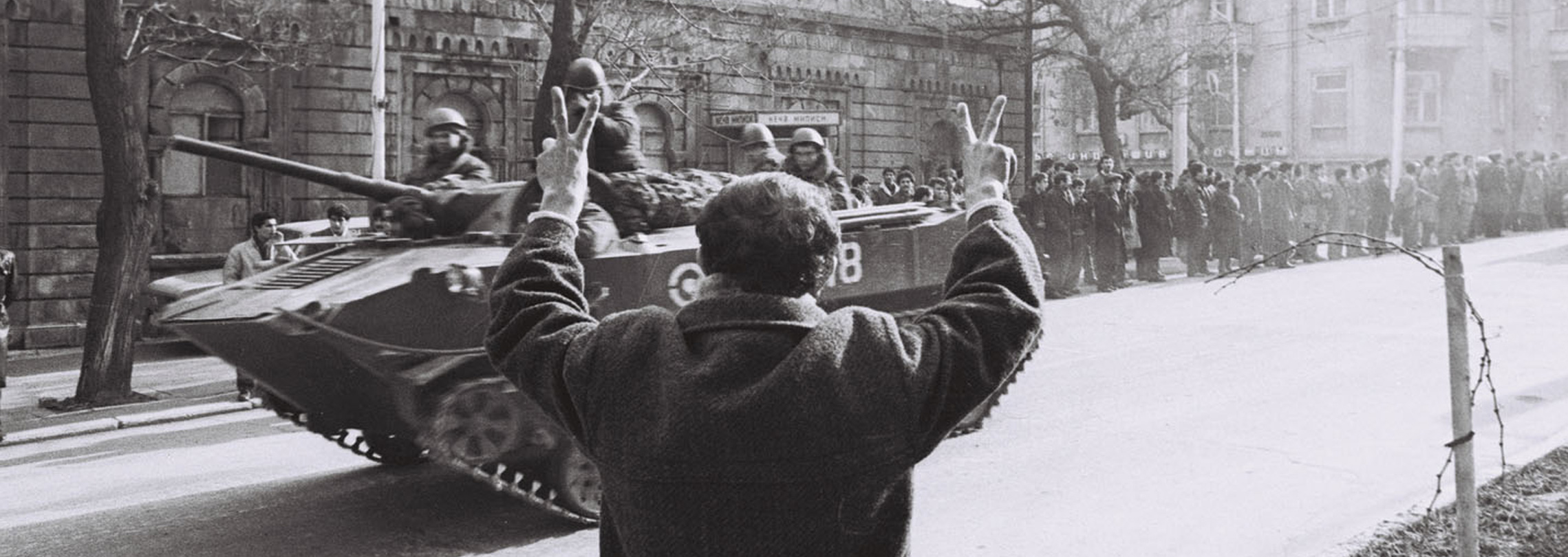Bloody memory
20 January – National Mourning Day
The events that led to the tragedy of 1990 date back to 1987, when attempts to annex the Nagorno-Karabakh to Armenia and another wave of the expulsion of Azerbaijanis from their historical villages in Armenia were gaining momentum. But the Soviet leadership committed a terrible crime against the Azerbaijani people, instead of preventing these growing tensions.
On the night of January 19-20, under direct instructions from Mikhail Gorbachev, the then General Secretary of the Central Committee of the Communist Party of the Soviet Union, military units from the USSR Ministry of Defense, State Security Committee and Ministry of Internal Affairs entered Baku and nearby regions, massacring the civilian population using heavy military equipment and other various forms of weaponry. The Soviet army deployed a large contingent of special and internal troops in Baku who displayed unprecedented cruelty against the peaceful population. The army had brutally killed 82 civilians and severely wounded 20 others until a curfew was announced. Several days after the curfew was announced, 21 more civilians were murdered in Baku. 8 more civilians were killed in areas where a curfew had not been imposed, on January 25 in Neftchala and on January 26 in Lankaran.
As a result of the January tragedy, 131 civilians were killed and 744 more were wounded in Baku and nearby regions. Among those killed were women, children and the elderly, medical employees and policemen.
The Khojaly genocide
The Khojaly genocide is the gravest crime of genocide committed against peaceful Azerbaijani people in the course of Armenia’s aggressive war against Azerbaijan. Prior to this, as part of a planned occupation, the peaceful population of the Baghanis Ayrim village in Azerbaijan’s Gazakh region bordering with Armenia and the Azerbaijani-populated villages of Imarat-Garvand, Tug, Salakatin, Akhullu, Khojavand, Jamilly, Nabilar, Meshali, Hasanabad, Karkijahan, Gaybaly, Malibayli, Yukhari and Ashaghi Gushchular, Garadaghli villages in Nagorno-Karabakh, were murdered with particular cruelty. It is sufficient to note that just a few days before the Khojaly genocide, on February 17 1992, 80 Azerbaijanis were massacred in the Garadaghli village in Khojavand.
The town of Khojaly was located in the strategically important part of the Nagorno-Karabakh region in Azerbaijan. It is situated 10 km south-east from Khankandi, between Aghdam-Shusha and Asgaran-Khankandi highways. The strategic importance lies in the fact that the only airport in the Nagorno-Karabakh region was located here. In the second half of February 1992, Khojaly was under total siege by Armenian military units and any attempts by local civilians to break the siege were prevented.
On the night of 25-26 February 1992, in violation of all international legal norms, Armenian armed forces attacked the civilian population of the sieged town of Khojaly with heavy military equipment, killing them with unprecedented brutality and razing the town to the ground. As a result of a crime against not only the people of Azerbaijan but against humanity, 613 civilian Azerbaijanis, including 63 children, 106 women, and 70 elders were brutally murdered on grounds of national identity.
31 March - Day of Genocide of Azerbaijanis
The Gulustan and Turkmenchay treaties, signed in 1813 and 1828 respectively, laid the foundation of the split of the Azerbaijani people and division of their historical lands, subsequently leading to expropriation of those lands. In a very short span of time, the mass resettlement of Armenians to Azerbaijani lands began.
Although Armenians, who were resettled in the territories of Iravan, Nakhchivan and Karabakh khanates, were less in numbers than the Azerbaijanis living there, they managed, with support from their patrons, to establish an administrative unit called the “Armenian oblast”. This artificial division of state territories encouraged the displacement of the indigenous people of Azerbaijan from their lands as well as the execution of genocidal policies against the Azerbaijani people. In order to realize the idea of “greater Armenia” on Azerbaijani lands, Armenians began to falsify their own history and the history of Azerbaijan and the entire Caucasus.
Inspired by the idea of creating “Greater Armenia”, Armenians carried out a series of bloody massacres against Azerbaijanis between 1905 and 1907 in Azerbaijan as well as Azerbaijani villages located in the territory of present-day Armenia. Hundreds of Azerbaijani settlements were destroyed and razed to the ground, and thousands of civilians were brutally killed.
Mass expulsion of Azerbaijanis from their historical lands in the territory of present-day Armenia
Mass resettlement of the Armenians from the Ottoman and Iranian territories by Tsarist Russia in the 19th century marked the beginning of oppression of the Azerbaijanis in their own historical lands. A deliberate policy of ethnic cleansing and genocide conducted against Azerbaijanis in the early 20th century brought our people face to face with many hardships and tragedies. As a result of this plan, the Azerbaijanis who had for thousands of years lived in the territory of present-day Armenia were displaced from their historical lands, subjected to massacres and genocides and thousands of their historical and cultural monuments and settlements were destroyed.
Between 1918 and 1920, hundreds of thousands of Azerbaijanis were killed and expelled from their homelands to become refugees and hundreds of Azerbaijani villages were wiped off the face of the earth.
Having taken advantage of the Sovietization of Transcaucasia, Armenians managed to annex Zangazur and a number of other Azerbaijani territories into Armenian SSR in 1920. To further extend the policy of expelling Azerbaijanis from these areas, they later resorted to new means.

